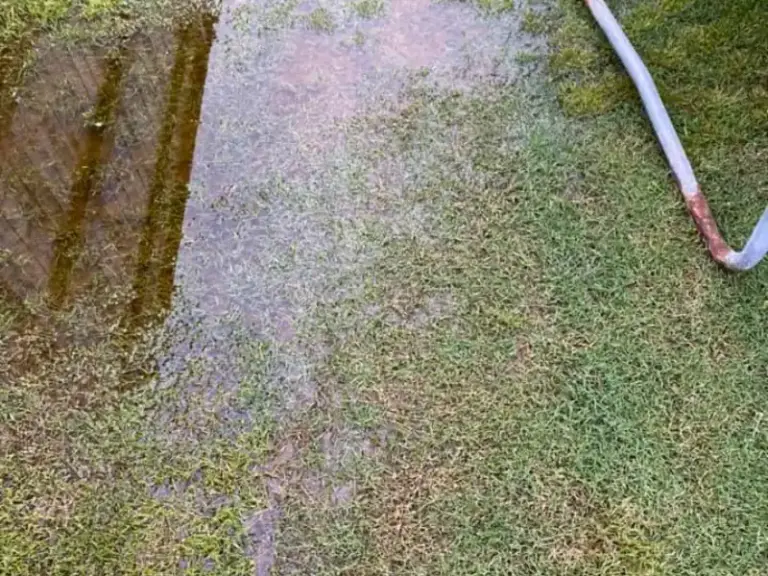Pros and Cons of Composite Fencing
When choosing a fencing solution, the first thing that crosses your mind is guaranteeing your security. However, factors like privacy, durability, esthetic value and cost also determine your purchasing and installation decisions. If composite fencing already comes on your to-do list, you likely wonder if it will be worth a try?
A yard composite fencing is eco-friendly, attractive, long-lasting, and easy to maintain. In addition, its insect-resistant and adds unmatched aesthetic appeal to your yard. However, it’s prone to sagging, fading and tend to be a lot pricier compared to other fences like wood.
What is Composite Fencing?
Composite fencing is made from a mixture of natural wood and recycled ground plastic. Like conventional fence panels, composite fencing has a woody appearance. The only difference is that the latter has plastic materials to give it more strength and last long, creating a more authentic look. The first thing composite fencing manufacturers do is collect recycled plastic and sawdust from landfills for grinding. The recycled materials are extracted from gallon milk cartons, grocery bags, and other recycled materials. Finally, the natural wood portion from leftover wood pulp from paper mills is combined with the ground recycled materials to form composite fencing.
Pros and Cons of Composite Fencing
Unlike traditional wood panels, composite fencing adds a rustic woody look that is appealing to the eyes. As is expected of fencing materials, composite fencing also has its fair share of pros and cons.
Pros of Composite Fencing
Here are a few advantages of composite fence to consider:
1. It is built to last
In terms of durability, composite fencing beats conventional wood fencing, hands down. It was designed to replace wood fencing, which was more prone to rot. Also, it closely resembles wrought iron. The only difference between them is that composite fencing mimics wooden panels’ appearance, making it perfect for lovers of wood fences.
Unlike wood, a composite fence can withstand harsh weather and is insect-resistant. You won’t have to paint or replace it often as you would with wood. Such a high-quality fence can last up to 30 years, helping you worry less about maintenance costs.
2. It’s easy to maintain
Wood panels need maintenance solutions like sanding, oiling, and painting, making them strenuous to maintain. Considering how often fencing materials depreciate, wouldn’t it be convenient to get one that’s easy to maintain? While composite fences may be pricier than traditional wood panels, the former is easy to clean with soapy and water. If it gets muddy, all you need to do is clean it off using a soft brush, and it will be as good as new. It feels like cleaning a plastic material.
3. Its esthetic appearance is unmatched
You can paint or stain wood panels, but it won’t match the beauty of a composite fence. Provided the installation and finishing are done by a professional, you won’t have to worry about the colors fading off due to the sun’s UV rays. The plastic-wood fencing can be customized using a wood grain texture if you want it to look like wood.
4. Available in versatile styles
Whether you’re a fan of blue, red, black, or earthy brown, composite fencing offers you versatile options to choose from. Today, engineers have utilized superior technology to develop steel reinforced rails, elegant flat-top post caps, and numerous fastening options. The result is reduced sagging or warping complaints from users.
5. It’s insect-resistant
Termites and other types of vermin like to eat wood, reducing its longevity. Since the plastic-wood fence is pest-resistant, you can rest assured that it won’t have cracks or splinter no matter how long you’ve used it.
6. They are eco-friendly
Composite fence is a green product, so you don’t have to worry about harming the environment. It’s a perfect solution to ensuring non-biodegradable items like plastic are utilized correctly. Also, the plastic-wood fence doesn’t need painting or straining like conventional wood. They don’t have reflective glare like vinyl fencing, either.
Cons of Composite Fencing
Here are a few disadvantages of composite fence to consider:
1. It’s pricier than a wood fence
Manufacturing composite fence attracts additional costs, which translates to its hefty price as a finished product. While it may not be costlier than wrought iron, you may find it pricier than wood. If you’re looking to upgrade to composite fencing, it’s vital to weigh your options first. If you find its price is pocket-friendlier than an iron fence, you can go for it.
2. It may sag due to hot weather or fire
In a fire or long periods of harsh sun, your composite fence might not withstand the hot temperatures because it primarily comprises recycled plastic. Unpredictable weather conditions also cause it to shrink or expand. This problem makes it difficult for people to decide whether to replace the wooden fence with iron or go for composite and prepare for the consequences. It’s safer to go for a product embedded in galvanized steel for added strength and prevent sagging.
3. It might fade
While composite fencing offers you esthetic value for your money, expect it to fade over time. The harsh reality is it won’t go back to its former shade of color, no matter what you do. It’s either you accept that it’s lost its color or start over with new fencing.
Composite fencing advantages outweigh its disadvantages because it is a perfect alternative to wood fences at face value. So, if you have a wooden fence and are worried that it might make you spend more on maintenance and repair, you are better off upgrading to composite fencing.
Problems of Composite Fencing
When looking to install a composite wood fence for the first time or already have one, you likely wonder if it has any downsides. Here’s what to expect:
1. The possibility of rotting can’t be overlooked
Considering composite fencing has wood components, it is no surprise that the possibility of rotting may occur in the future. It’s not easy to assume that all manufacturers treat their products with a rot-resistant preservative. Even if they succeed in treating it, plastics alone don’t guarantee 100% protection of the wood element from rotting. Therefore, it’s advisable to choose the galvanized steel option or seal the boards to protect their surface from moisture.
2. Durability isn’t guaranteed
Imagine buying a product as expensive as a composite fence, only to realize it’s succumbed to wear-and-tear before its fifth year. The price isn’t a guarantee that it will last long. It all depends on the manufacturing process and the quality of the plastic-wood fencing you buy. While some manufacturers have tried inventing solutions to prevent warping, others still show problems.
Before making your purchasing decision, how about researching the types of composite fencing. An older product is likely to warp or rot than newer models. Still, time is the only factor that can tell if you’ve bought a durable product.
3. High cost
Whether you want to replace your wood panels with composite fencing or already have one and want to upgrade to a newer model, one thing you can’t ignore is the high cost. It gets frustrating to buy a pricier product that doesn’t make you feel value for your money. The last thing you want is paying extra cash for a replacement when the product description insists that it can last up to 30+ years, yet it already looks worn out at the fifth year. To avoid incurring replacement costs in the future, buy a product with a 25+ year warranty, giving you enough time to gauge its longevity.



